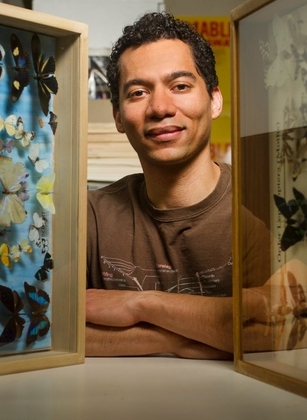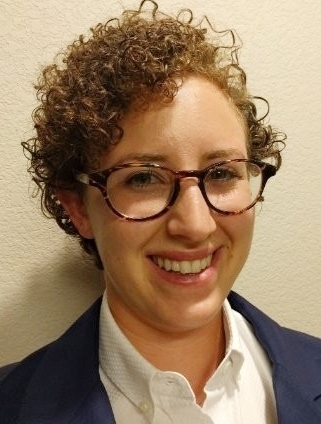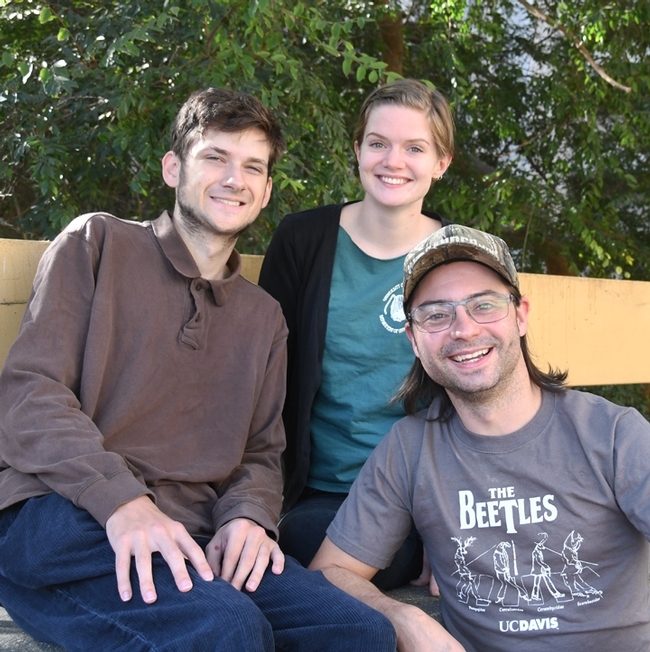
If you know the answer to that, you could have scored at the Linnaean Games competition at the recent meeting of the Pacific Branch, Entomological Society of America (PBESA).
The answer: "In moving streams." (Rheophilic means "preferring or living in flowing water.")
The UC Berkeley-UC Davis Linnaean Games Team, comprised of graduate students, answered that question--and many more--to win the PBESA championship and will now compete for the national championship at the Entomological Society of America's annual meeting, set Nov. 11-14 in the Vancouver Convention Center, Vancouver, B.C.
If you've ever been to the national Linnaean Team Games, they're a kick, both educational and entertaining. Launched in 1983, they're described as "lively question-and-answer, college bowl-style competitions on entomological facts." The competitors? Winning teams from the ESA branch competitions. The teams score points by correctly answering random questions.
Such as:
Question: Name the fungal agent that grows naturally in soils throughout the world and causes white muscardine disease and is commercially packaged as a biological insecticide for the control of termites, whiteflies, and other insect pests?
Answer: Beauveria bassiana
Question: Name the process through which spiders use silk to fly and disperse.
Answer: Ballooning.

Washington also captained the UC Davis Linnaean Games Team that won the national championship twice, defeating the University of Georgia in 2016 and the University of Florida in 2015. "Veteran teammate" Boudinot, president of the UC Davis Entomology Graduate Student Association, served on both championship teams, and Bick, the 2016 team.
Last year UC Davis did not compete. Texas A&M won the national championship, with the Ohio State University finishing second.
Background: Each ESA branch hosts a Linnaean game competition at its annual meeting. The winning team and the runner-up both advance to the national competition. The UC Berkeley-UC Davis team won the regional championship at the Linnaean Games hosted by PBESA at its meeting June 10-13 in Reno by defeating Washington State University in a sudden death overtime.
Look for both of them at the national preliminaries, which begin at noon Sunday, Nov. 11. The finals will get underway at 5 p.m. on Tuesday, Nov. 13. Members of the winning team will each receive a gold medal and and a plaque for the team's department.
Theme of the ESA meeting is “Sharing Insect Science Globally.” It's a joint meeting with the Entomological Societies of Canada and British Columbia.
The 7000-member ESA, founded in 1889, is the world's largest organization serving the professional and scientific needs of entomologists and individuals in related disciplines. It is affiliated with educational institutions, health agencies, private industry, and government.
Resources:
Videos of the championship matches:
- 2017: Texas A&M (winner) vs. The Ohio State University
- 2016: UC Davis (winner) vs. University of Georgia
- 2015: UC Davis (winner) vs. University of Florida
All videos of the national Linnaean Games championships are posted here. To gain a preview of how this year's competing teams practice, be sure to read this piece in ESA's Entomology Today.
And examples of rheophilic insects? Heptageniid mayflies, perlid stoneflies, and some psephenid beetles. Think "moving streams."
Attached Images:
